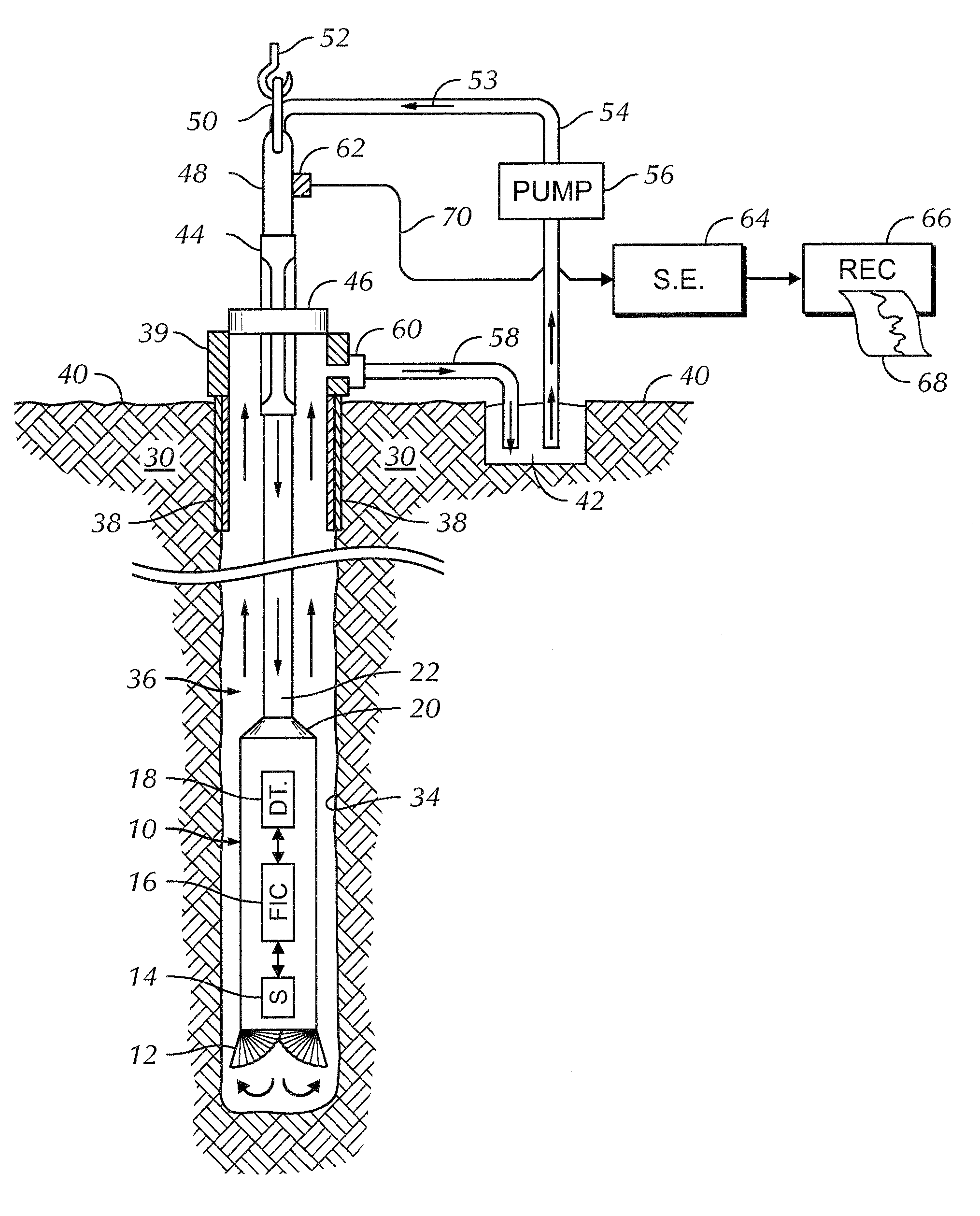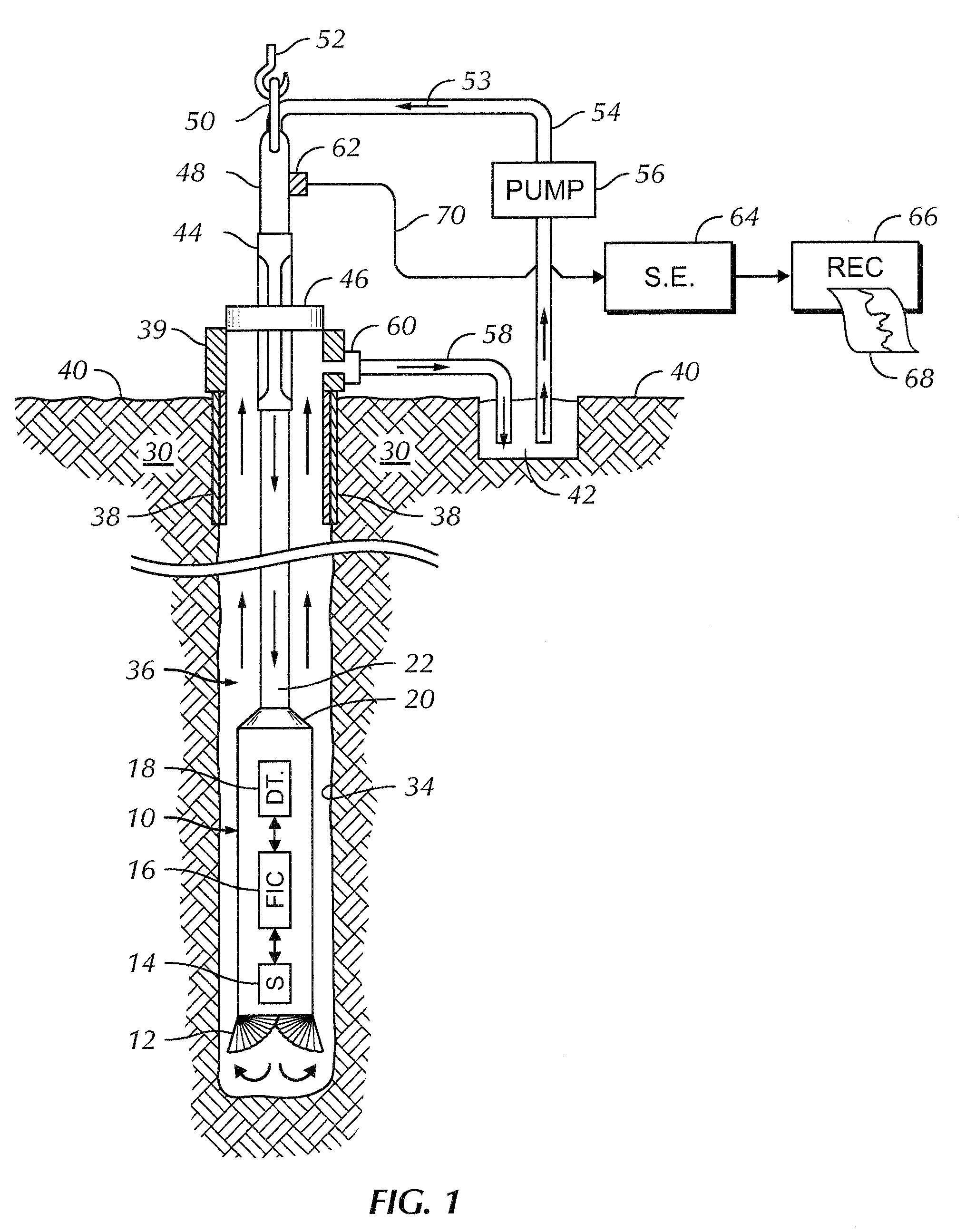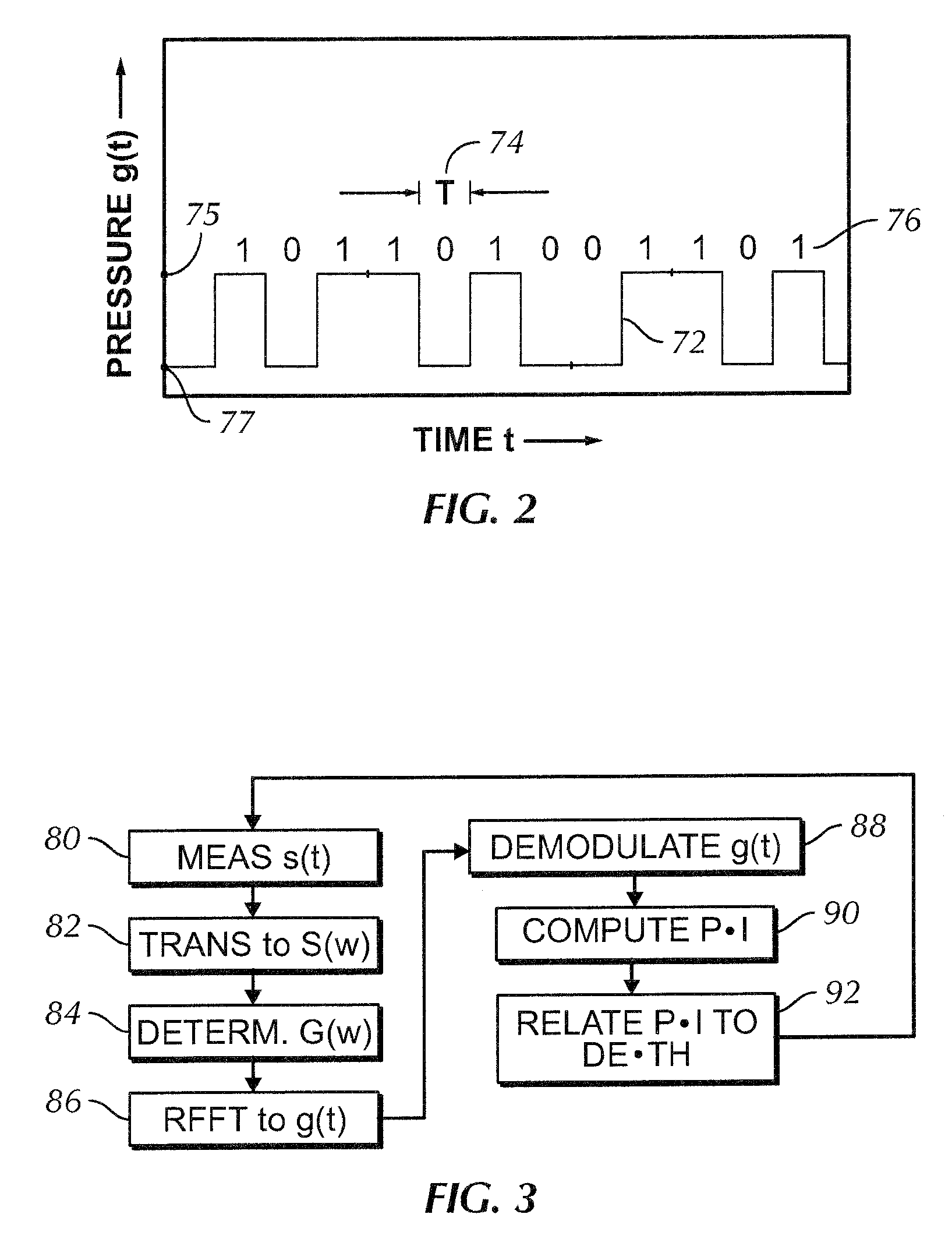Measurement-while-drilling mud pulse telemetry reflection cancelation
a technology of telemetry and mud pulses, which is applied in the field of measurement-whiledrilling mud pulse telemetry reflection cancelation, can solve the problems of reducing the practical data transmission rate, limiting the data transmission rate, and particularly affecting the more shallow depth of investigation measurement, so as to minimize the adverse effects of pressure pulse reflection, minimize the effect of pulse reflection, and optimize the mud pulse telemetry data ra
- Summary
- Abstract
- Description
- Claims
- Application Information
AI Technical Summary
Benefits of technology
Problems solved by technology
Method used
Image
Examples
Embodiment Construction
[0018]The present invention is a system for optimizing data rate from LWD or MWD logging systems using pulse sequence filtering of mud pulse telemetry. Although LWD and MWD logging systems have different connotations in the art, the invention will de disclosed in the context of a MWD logging system. Its should be understood that the invention is equally applicable to LWD logging systems.
Apparatus
[0019]FIG. 1 is a conceptual illustration of a MWD logging system disposed in a borehole and cooperating with a rotary drilling rig. The borehole is filled with a column of drilling mud. The elements and the functionality of these elements will be disclosed in detail in this section.
[0020]Again referring to FIG. 1, a MWD logging tool 10 is suspended within the borehole 36. The lower end of the logging tool 10 is terminated by a drill bit 12, and the upper end is terminated by a suitable connector 20 which operationally connects the tool to the lower end of a drill string 22. The housing of t...
PUM
 Login to View More
Login to View More Abstract
Description
Claims
Application Information
 Login to View More
Login to View More - R&D
- Intellectual Property
- Life Sciences
- Materials
- Tech Scout
- Unparalleled Data Quality
- Higher Quality Content
- 60% Fewer Hallucinations
Browse by: Latest US Patents, China's latest patents, Technical Efficacy Thesaurus, Application Domain, Technology Topic, Popular Technical Reports.
© 2025 PatSnap. All rights reserved.Legal|Privacy policy|Modern Slavery Act Transparency Statement|Sitemap|About US| Contact US: help@patsnap.com



